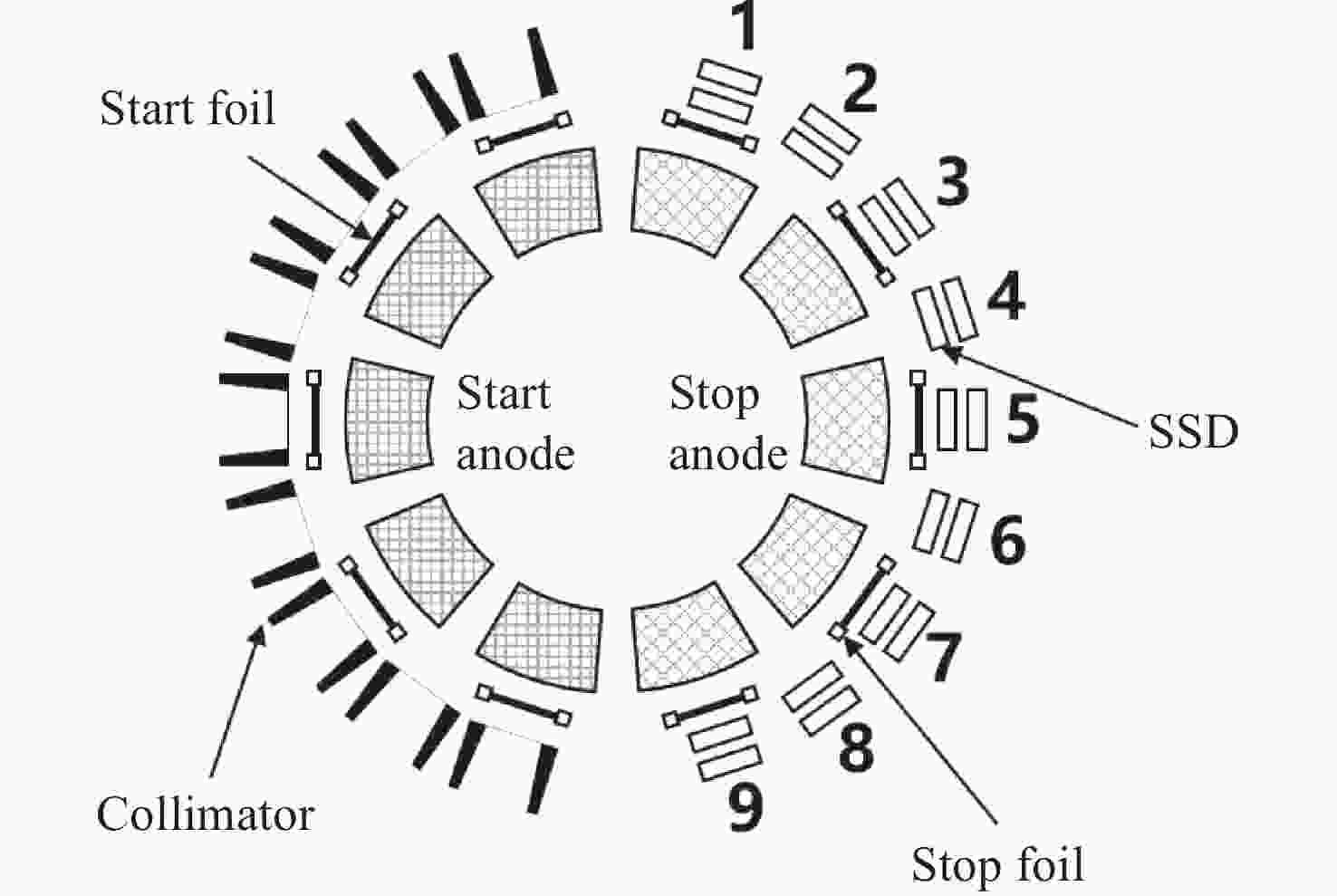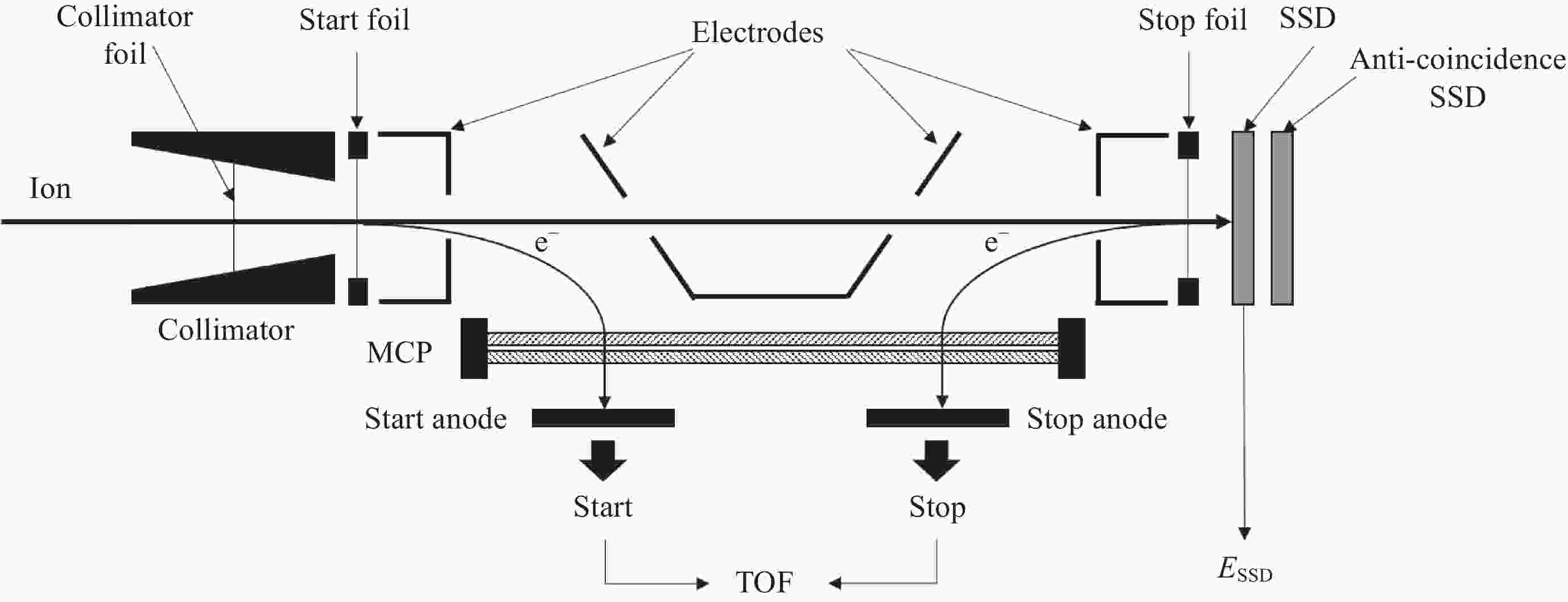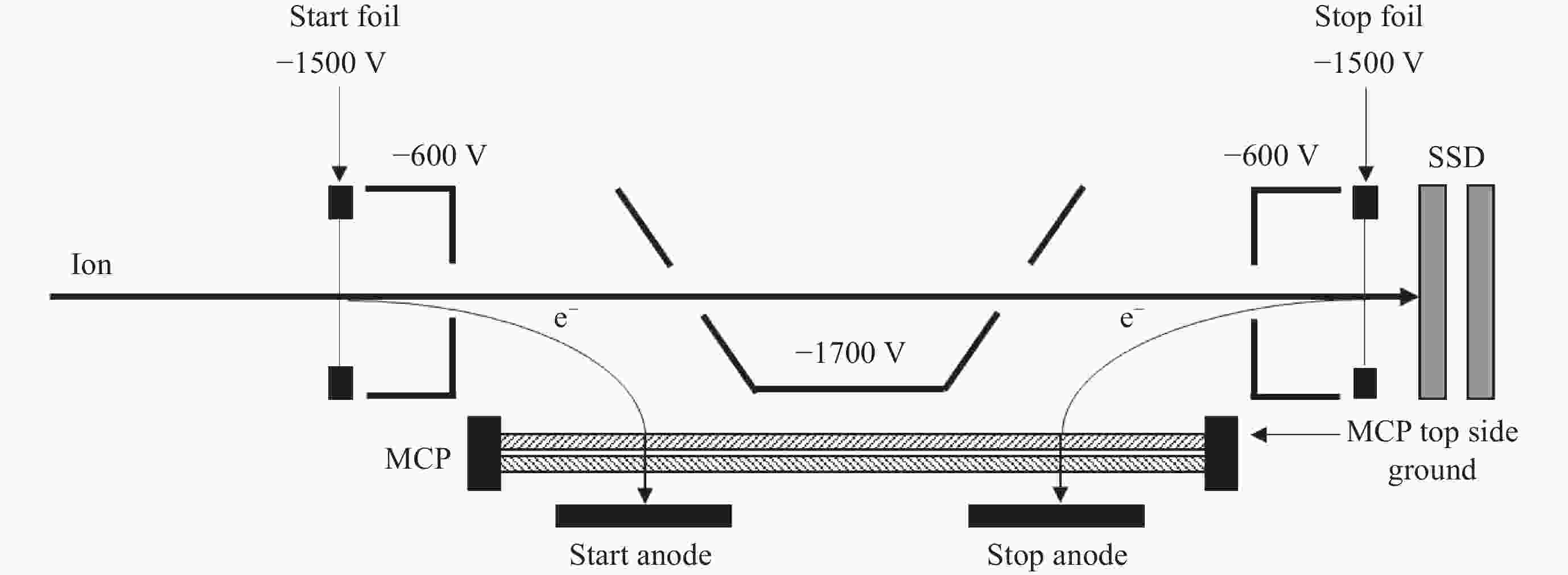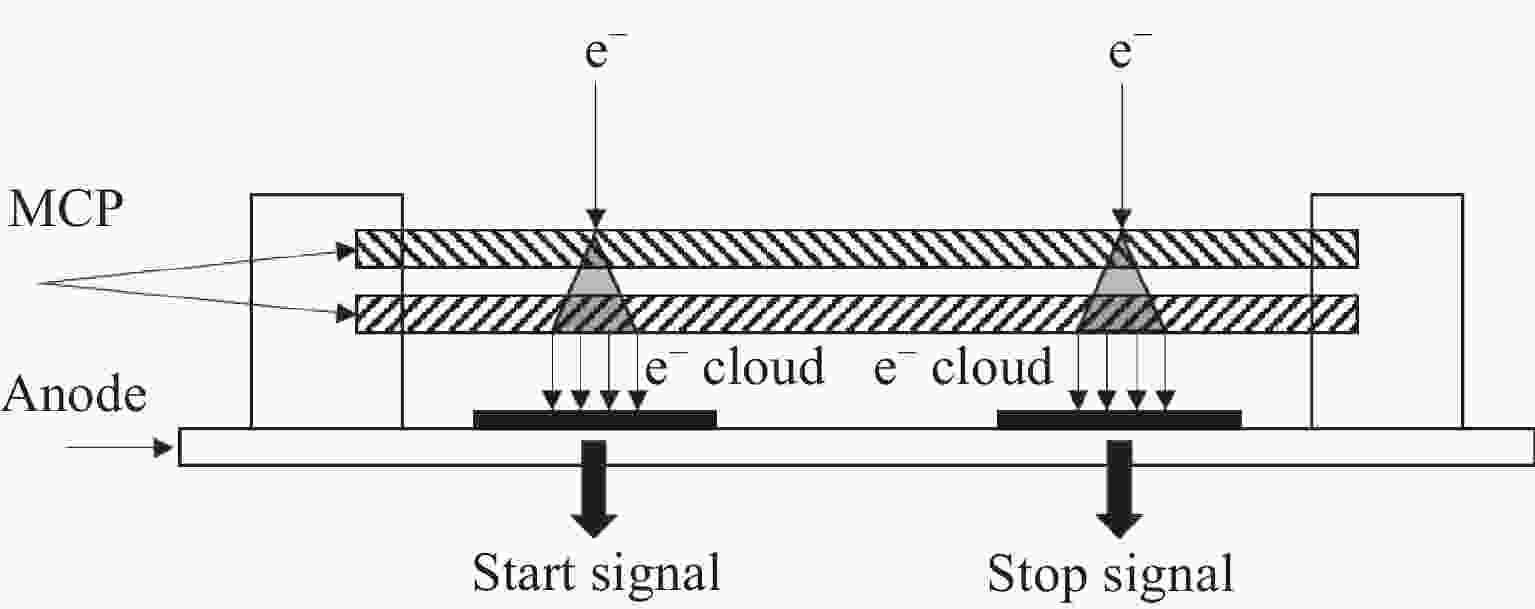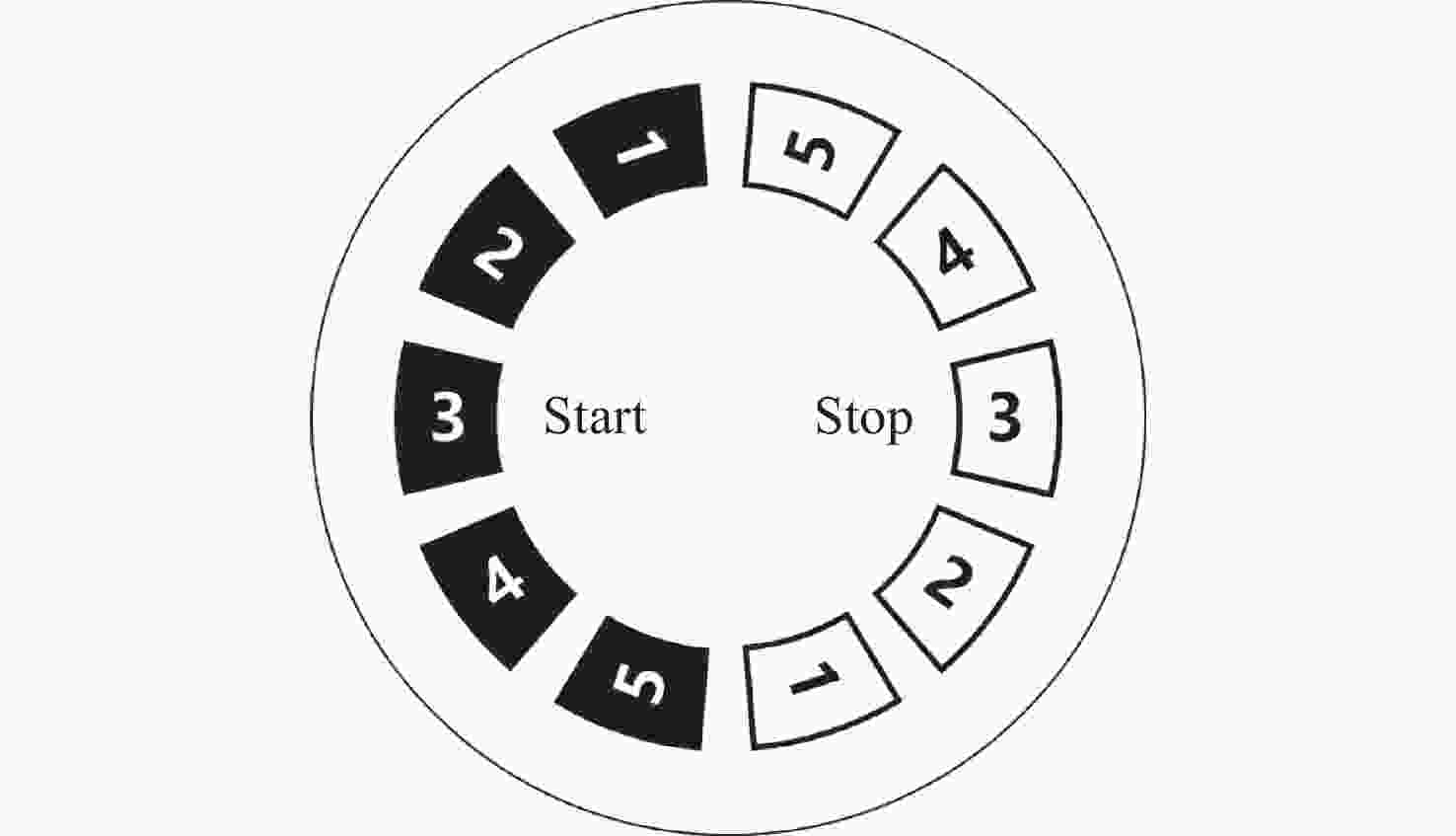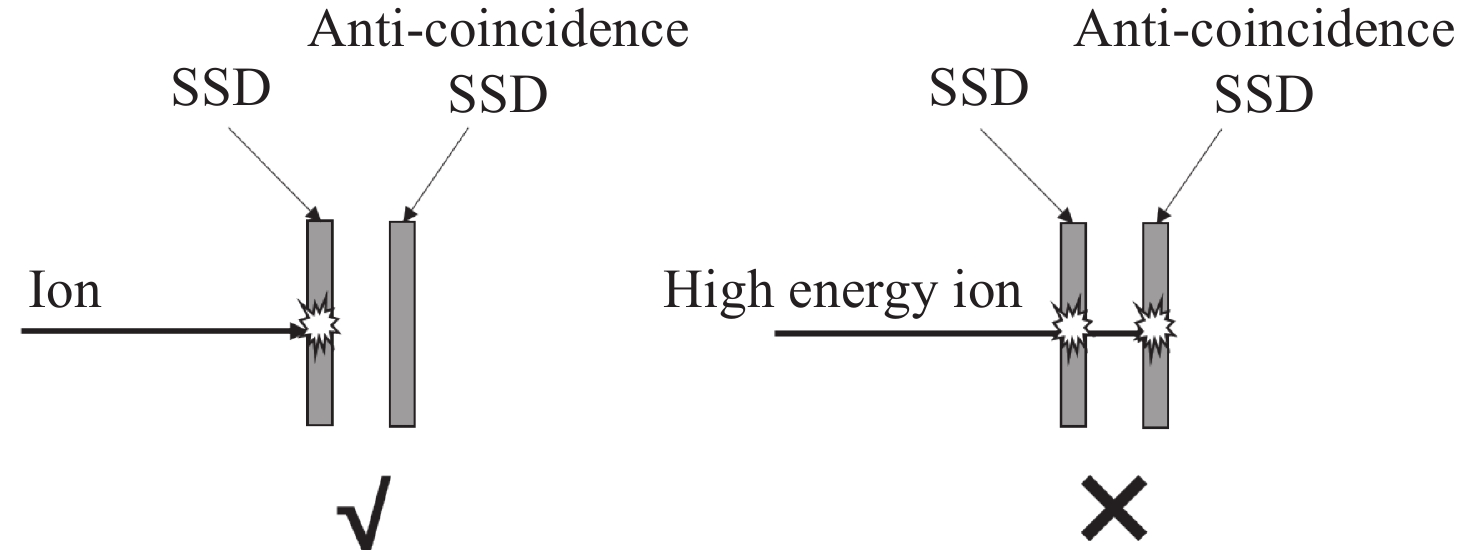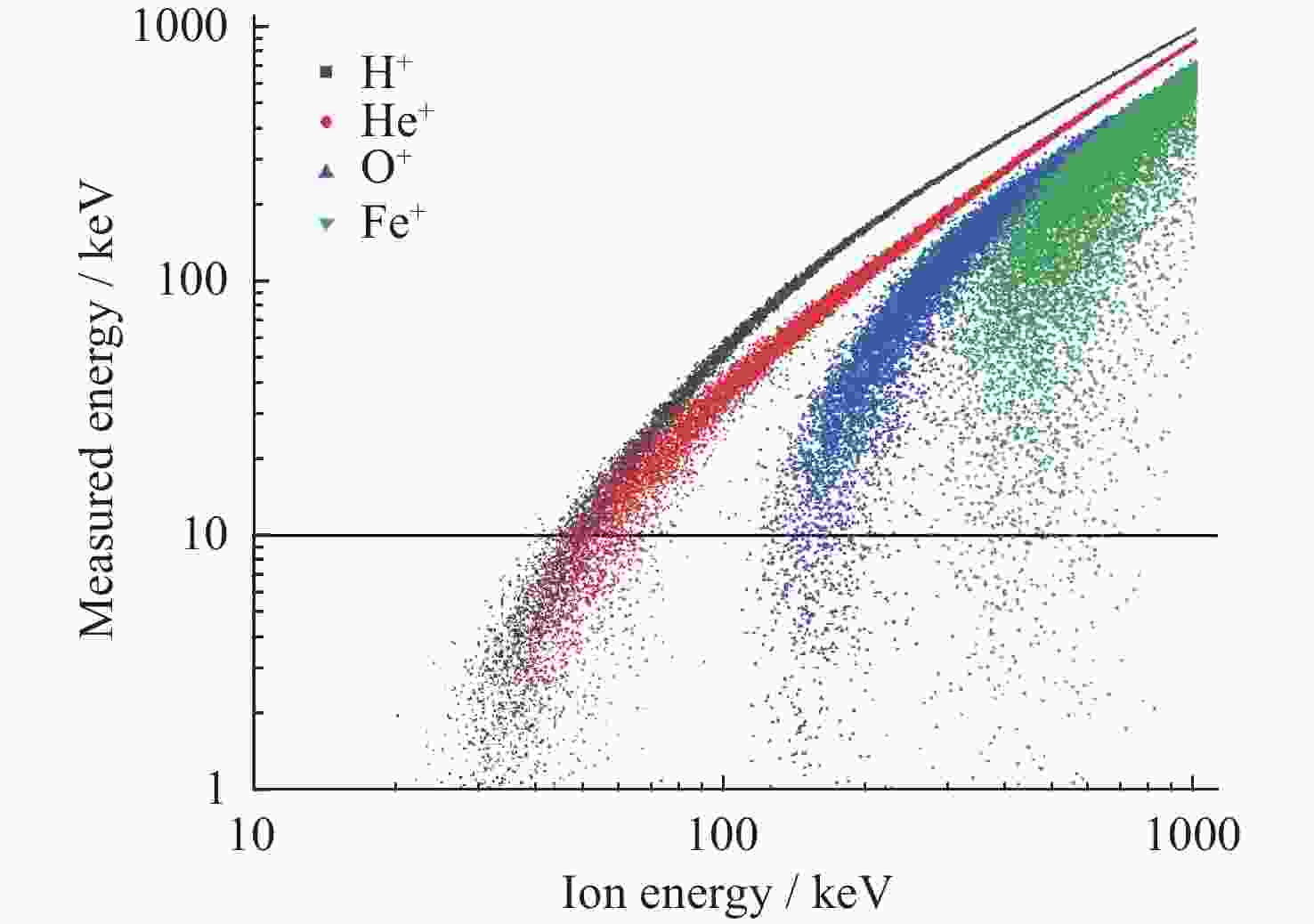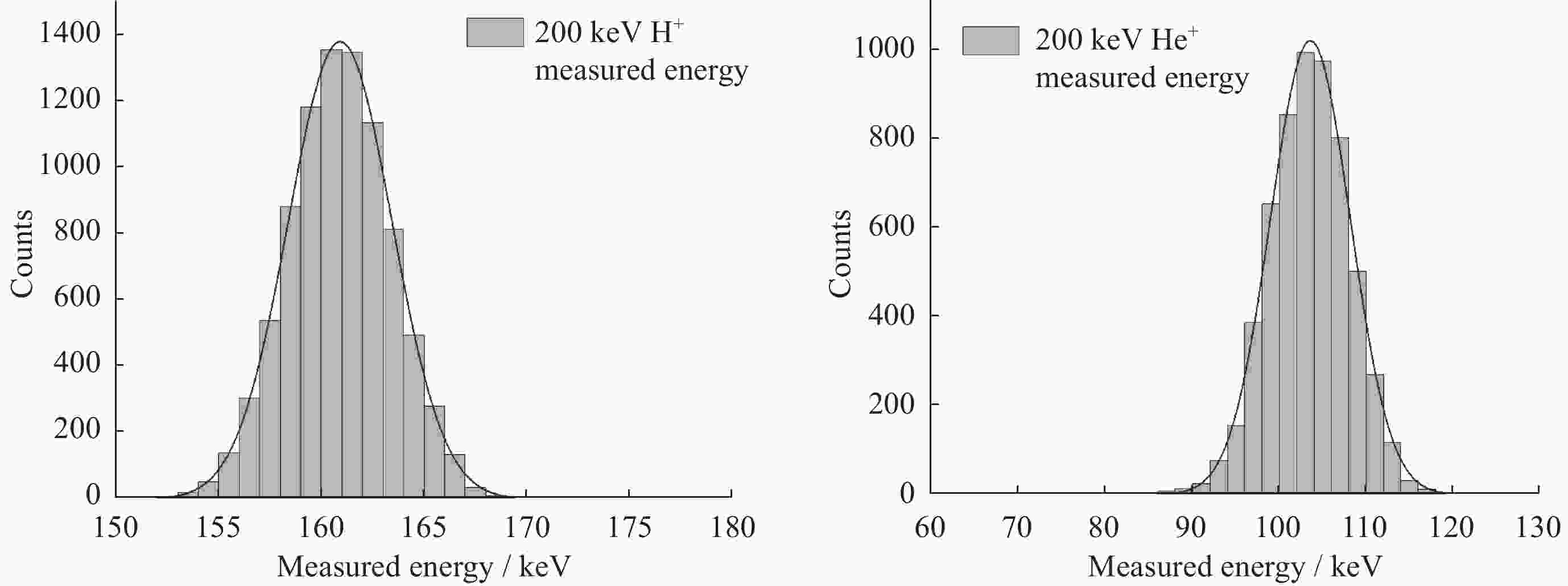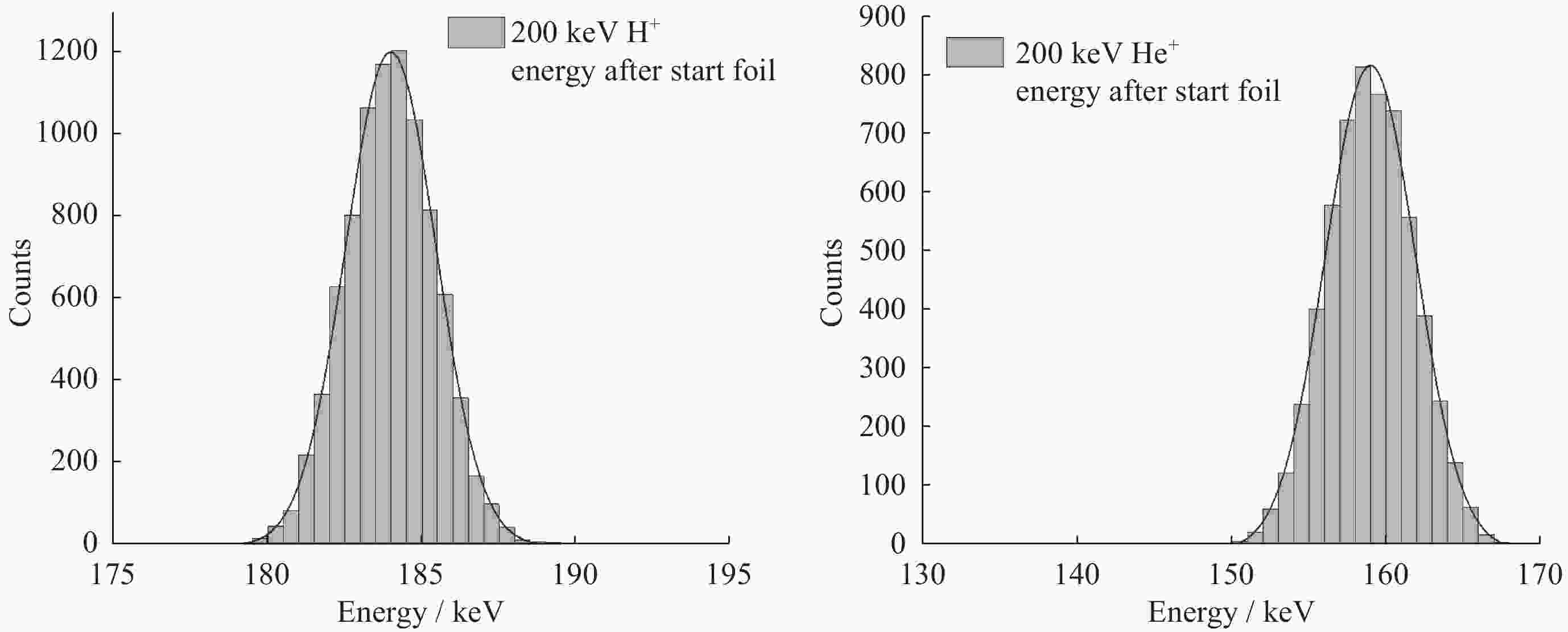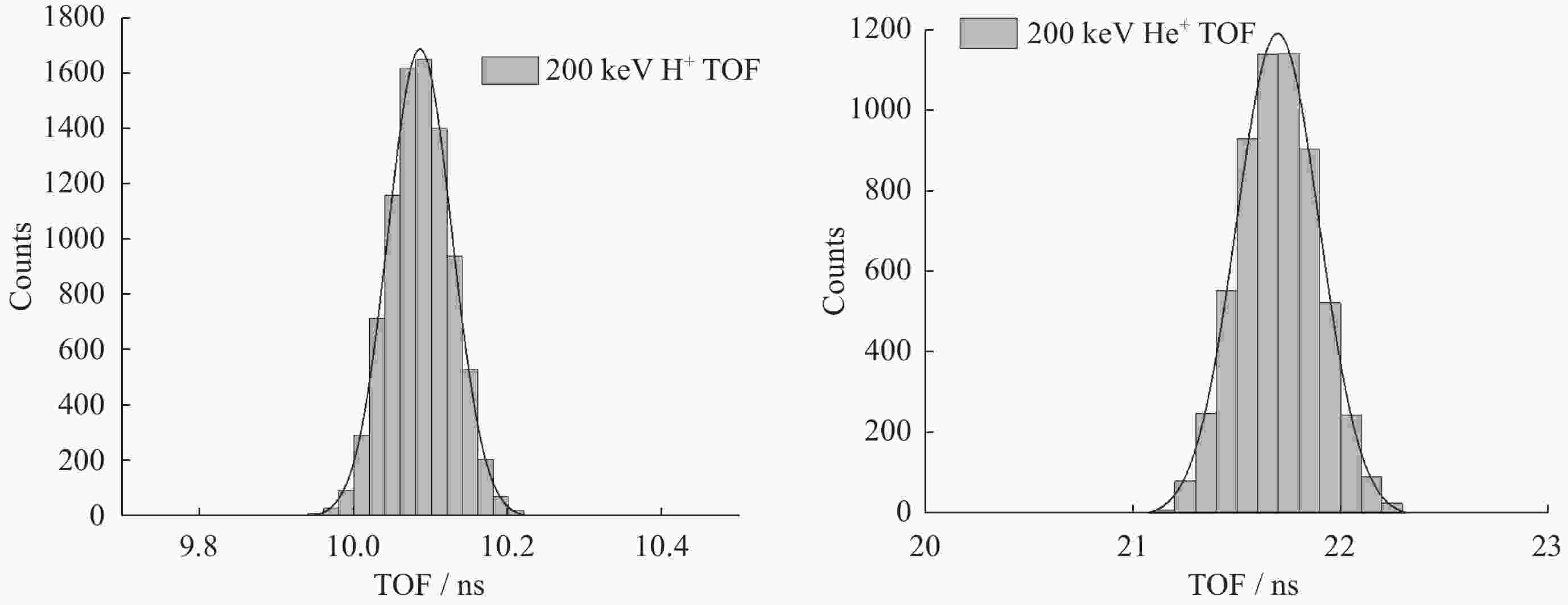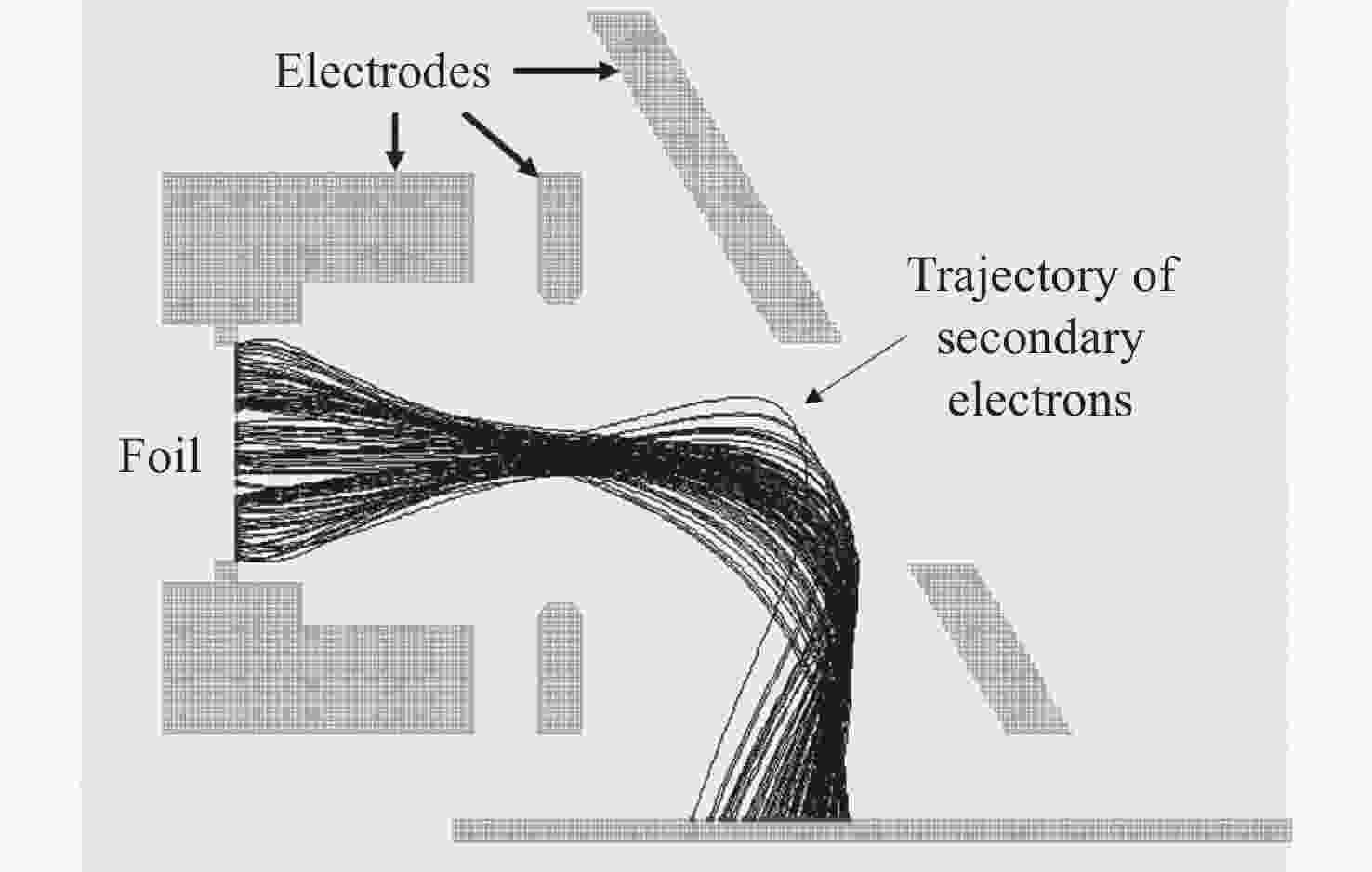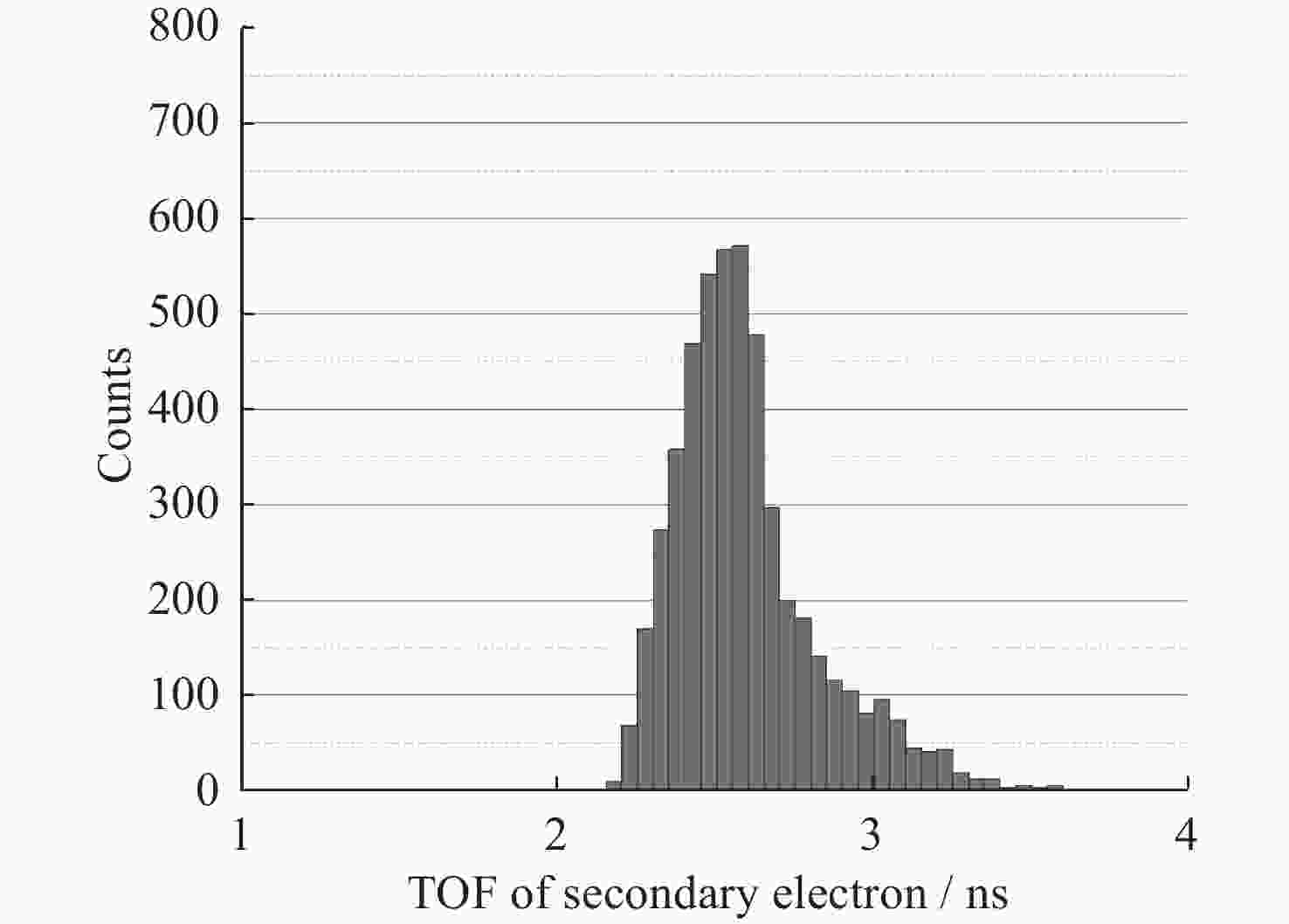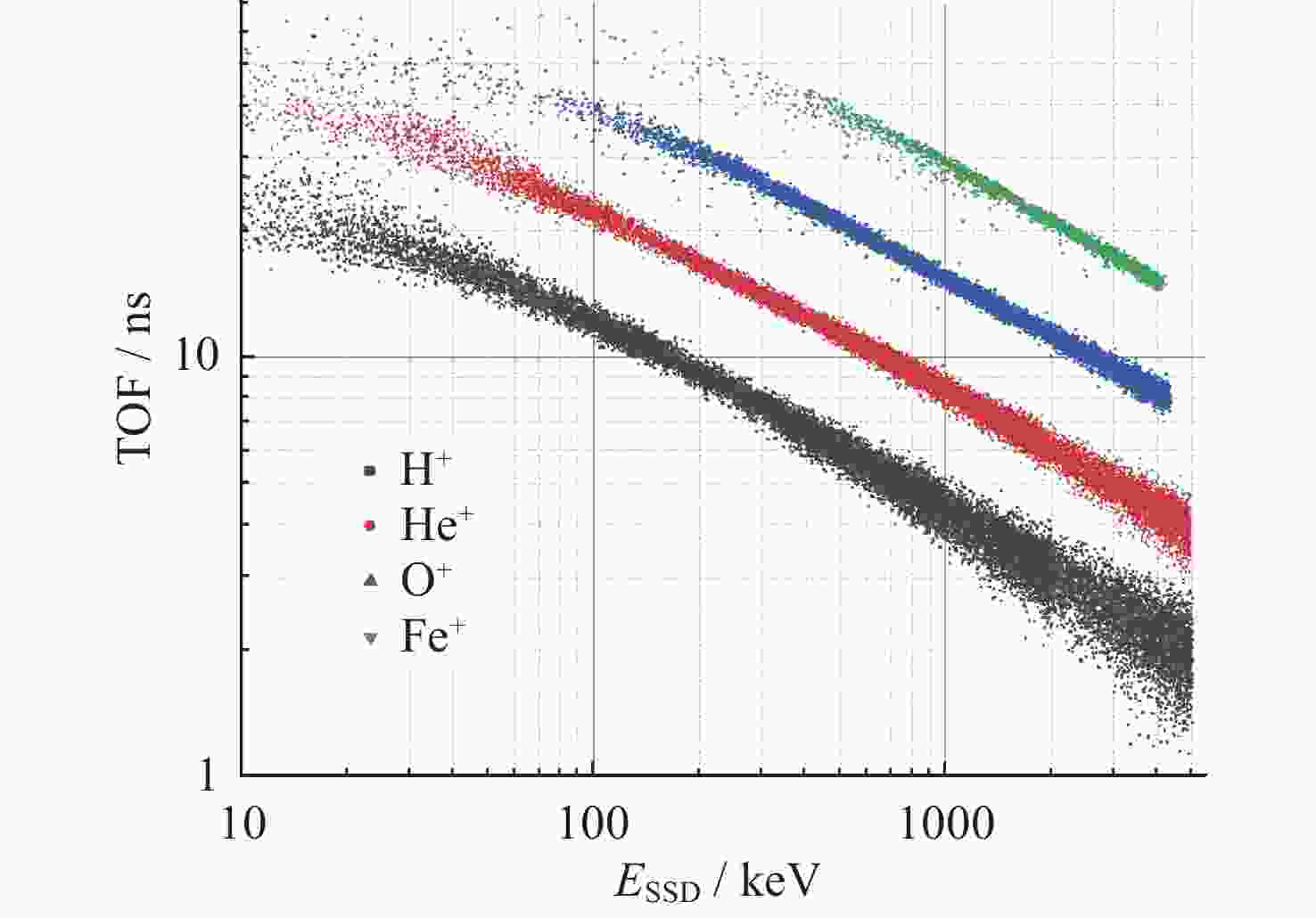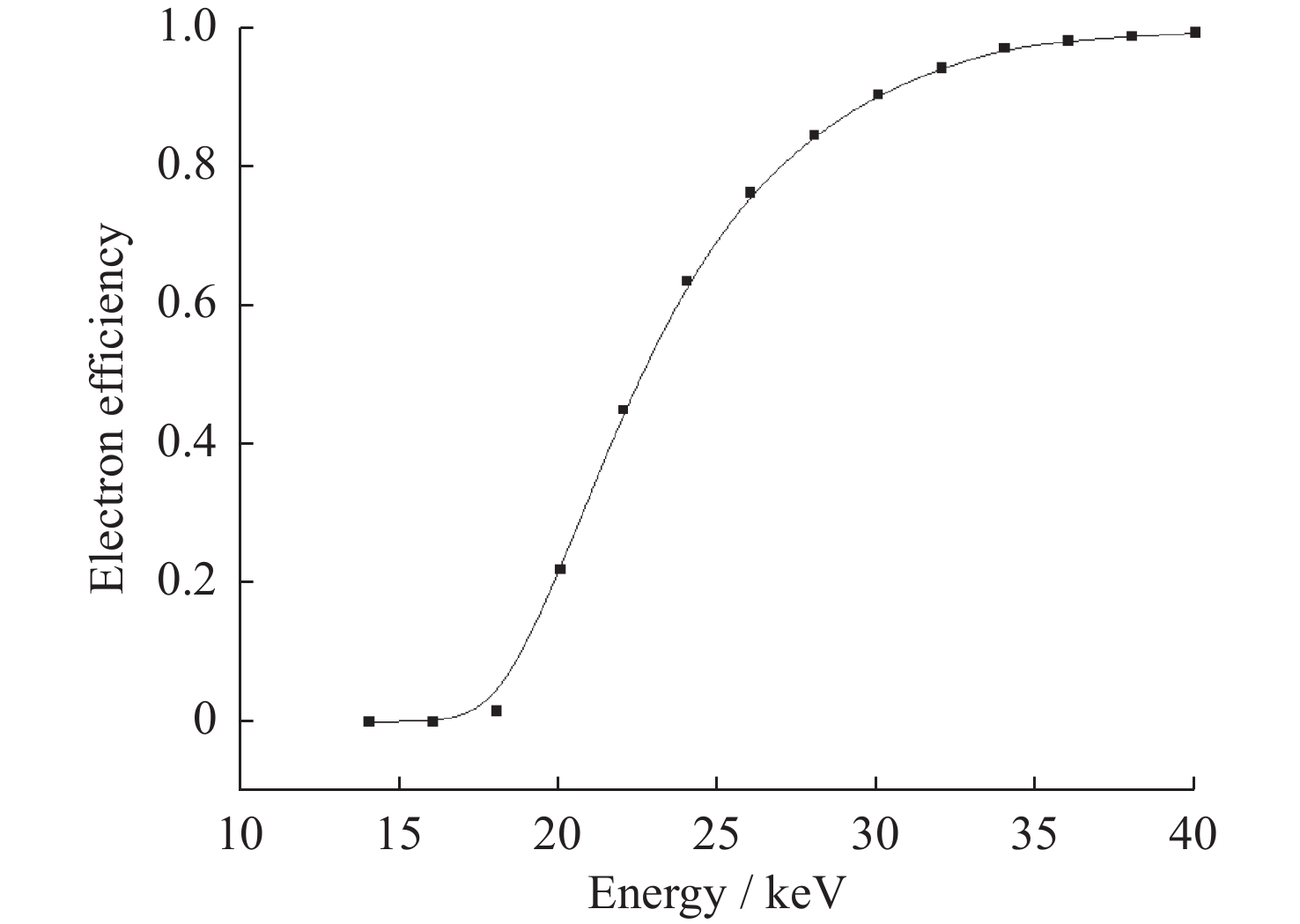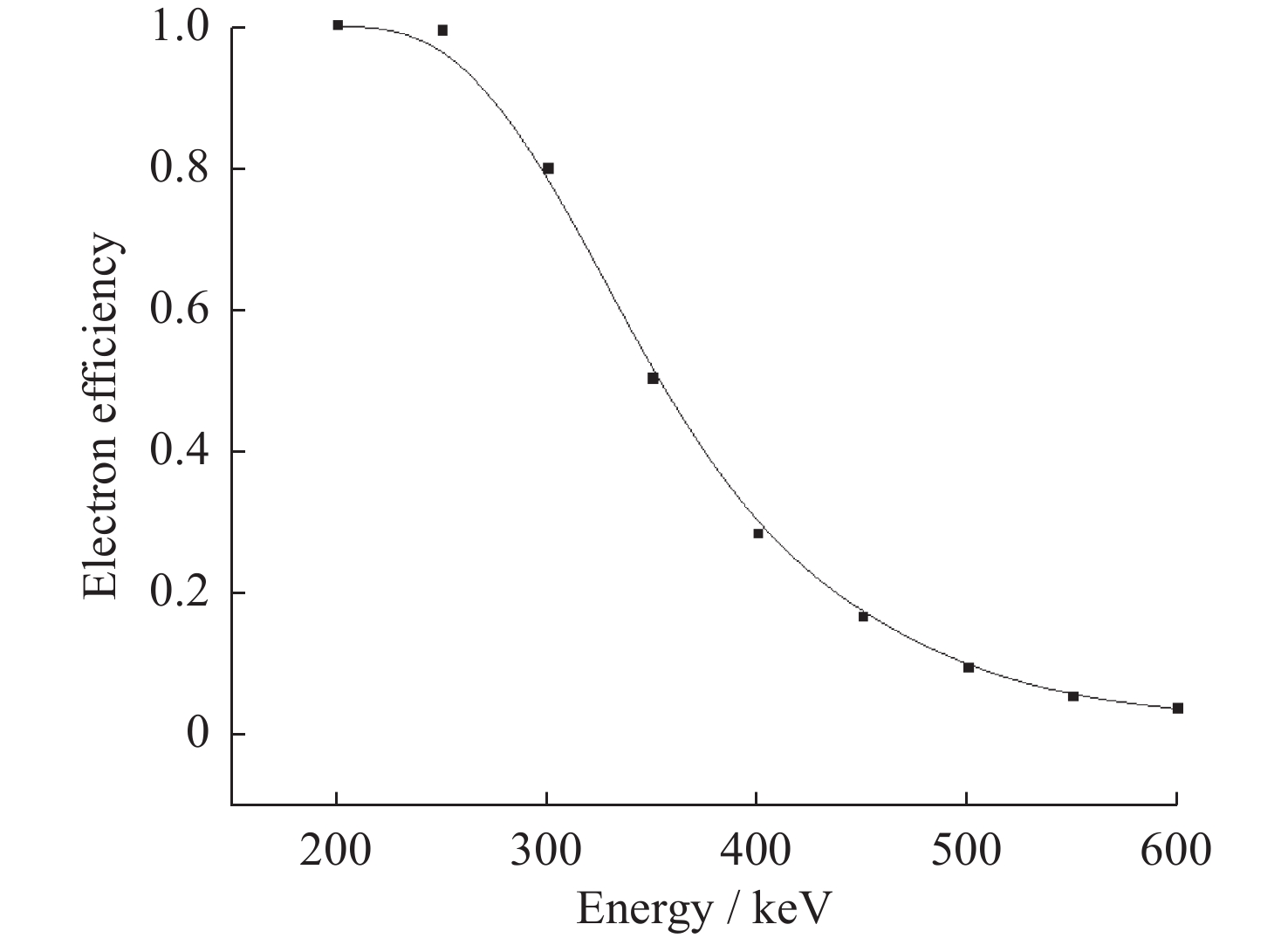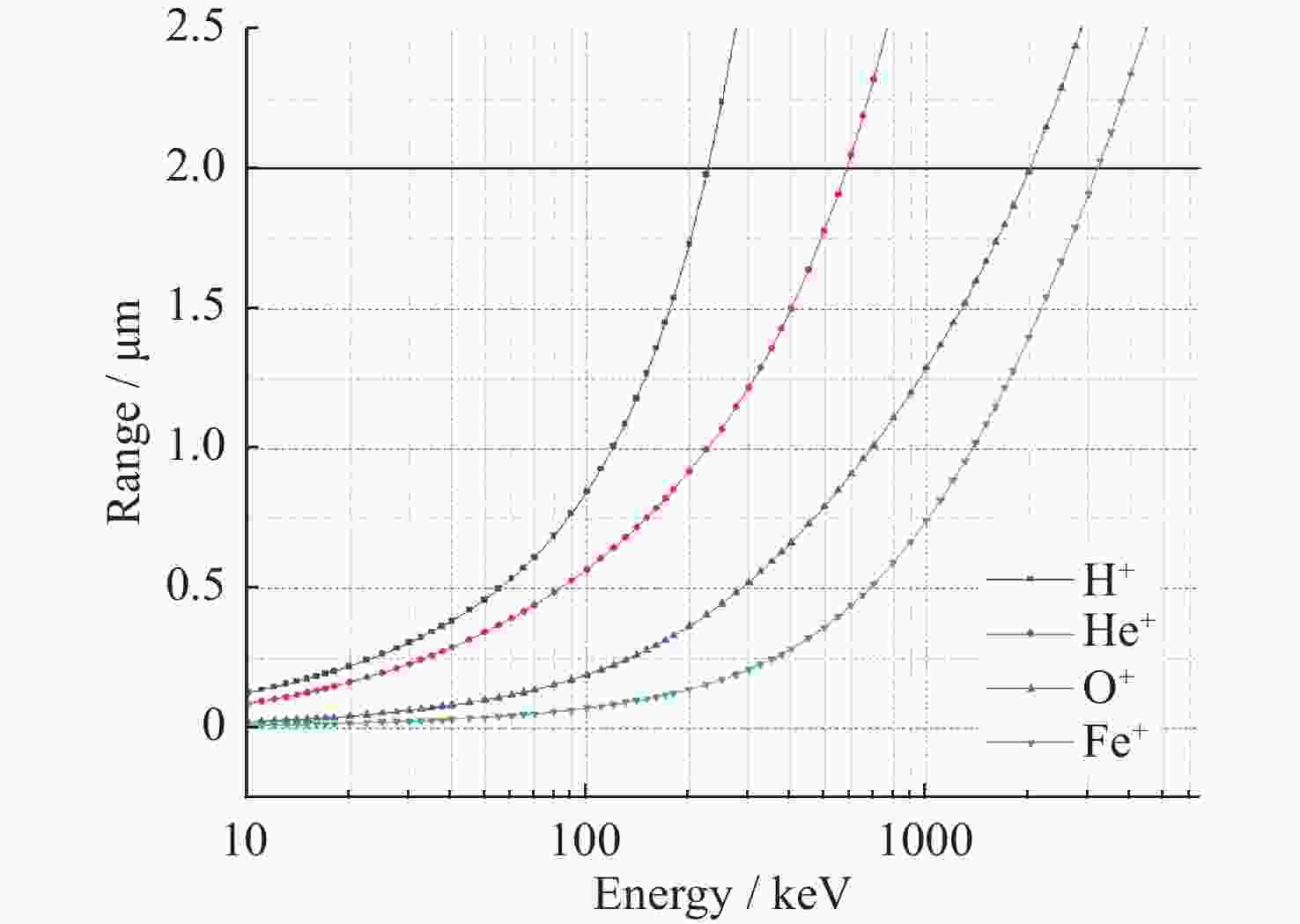一种基于TOF×E方法的空间中能离子探测器设计与仿真
doi: 10.11728/cjss2023.02.220310027 cstr: 32142.14.cjss2023.02.220310027
Design and Simulation of the Space-based TOF×E Medium Energetic Ion Detector
-
摘要: 对空间中几十keV到几MeV的中能离子进行成分、能谱和角分布进行测量,具有重要的科学价值和应用意义。中国在载人登月等深空探测计划中明确提出了对中能离子的探测需求,但当前尚未掌握中能离子测量技术。本文提出了一种基于SEE TOF×E方法的中能离子探测器方案,方案包括复合材料二次电子薄膜、电极、位置灵敏MCP探测器和SSD等核心部件的设计,可同时实现对5个方向的中能离子和4个方向的中能电子的测量。结合目前空间粒子探测载荷可实现的硬件时间分辨率、能量分辨率和仿真计算结果,可以发现,该设计可以在40 keV~5 MeV能量范围实现中能离子能谱测量;并能够对40 keV~5 MeV的H离子,45 keV~5 MeV的He离子,130 keV~5 MeV的O离子和240 keV~5 MeV的Fe离子进行离子成分分辨;同时可实现对20~500 keV的电子进行能谱测量。Abstract: This paper introduces a designing scheme of a medium energetic ion detector based on SEE TOF×E method, including key components such as secondary electron emission foils, electrodes, position sensitive MCP detector, and SSDs, which can simultaneously achieve both 5-directional medium energetic ions and 4-directional medium energetic electrons measurements. Based on the hardware time resolution and energy resolution limits that can be achieved by the current space-based particle detection payload, this paper presents a simulation analysis of the energy range and ion species resolution of the design scheme. The results show that this design scheme can achieve ion spectrum measurement in the energy range of 40 keV to 5 MeV, and electron spectrum measurement from 20 to 500 keV as well. And it can also perform ion component resolution for proton at 40 keV to 5 MeV, He ions at 45 keV to 5 MeV, O ions at 130 keV to 5 MeV, and Fe ions at 240 keV to 5 MeV.
-
表 1 4种离子的起测能量
Table 1. Energy thresholds of four species of ions
离子种类 起测能量/ keV H+ 40 He+ 45 O+ 130 Fe+ 240 表 2 本探测器与冰球探测器和Mushroom探测器的主要性能对比
Table 2. Main parameters comparison among puck detector, Mushroom detector and the detector in this article
本文探测器方案 JUNO的JEDI探测器
(冰球探测器)Parker Solar Probe的
Mushroom探测器离子探测 H+:40 keV~5 MeV
He+:45 keV~5 MeV
O+:130 keV~5 MeV
Fe+:240 keV~5 MeVH:10 keV~2 MeV
He:25 keV~2 MeV
O/S:45 keV~10 MeVH:40 keV~7 MeV
Z≥2:20 keV/n~2 MeV/n电子探测 20~500 keV 25~1000 keV 25~1000 keV 角分辨率 离子:10°×10°,5个方向
电子:10°×10°,4个方向
总视场:154°×10°离子:13°×12°,6个方向
电子:13°×12°,6个方向
总计视场:160°×12°离子:15°×12°~30°×30°
电子:30°×45°
总视场:2π表 3 设计方案性能仿真结果
Table 3. Simulations of the designing scheme
性能指标 仿真结果 离子测量 能量范围 H+:40 keV~5 MeV
He+:45 keV~5 MeV
O+:130 keV~5 MeV
Fe+:240 keV~5 MeV质量分辨率 $ {\sigma }_{m}/m\approx 16.65\mathrm{\%} $,@200 keV H+
$ {\sigma }_{m}/m\approx 21.44\mathrm{\%} $,@200 keV He+电子测量 能量范围 20~500 keV 抗离子干扰 可排除≤220 keV的H+,≤600 keV的He+,
≤2000 keV的O+,≤3100 keV的Fe+ -
[1] ZONG Q G, FRITZ T A, KORTH A, et al. Energetic electrons as a field line topology tracer in the high latitude boundary/CUSP region: cluster rapid observations[J]. Surveys in Geophysics, 2005, 26(1): 215-240 [2] ZONG Q G, FRITZ T A, WILKEN B, et al. Energetic ions in the high latitude boundary layer of the magnetosphere – RAPID-CLUSTER observation[M]//NEWELL P T, ONSAGER T. Earth's Low-Latitude Boundary Layer, Volume 133. American Geophysical Union, 2003: 101-110. DOI: 10.1029/133 GM10 [3] MILLAN R M, BAKER D N. Acceleration of particles to high energies in Earth’s Radiation belts[J]. Space Science Reviews, 2012, 173(1/2/3/4): 103-131 doi: 10.1007/s11214-012-9941-x [4] REAMES D V. The two sources of solar energetic particles[J]. Space Science Reviews, 2013, 175(1/2/3/4): 53-92 doi: 10.1007/s11214-013-9958-9 [5] REAMES D V. Particle acceleration at the Sun and in the heliosphere[J]. Space Science Reviews, 1999, 90(3/4): 413-491 doi: 10.1023/A:1005105831781 [6] JOKIPII J R. Acceleration and transport of energetic charged particles in space[J]. Astrophysics and Space Science, 2001, 277(1/2): 15-26 doi: 10.1023/A:1012212417410 [7] KOZYRA J U, LIEMOHN M W. Ring current energy input and decay[J]. Space Science Reviews, 2003, 109(1/2/3/4): 105-131 [8] WÜEST M. Time-of-flight ion composition measurement technique for space plasmas[M]//PFAFF R F, BORO-VSKY J E, YOUNG D T. Measurement Techniques in Space Plasmas: Particles, Volume 102. American Geophysical Union, 1998. DOI: 10.1029/GM102 p0141 [9] GLOECKLER G. A versatile detector system to measure the change states, mass compositions and energy spectra of interplanetary and magnetosphere ions[R]. NASA Center for Aerospace Information (CASI), 1977 [10] GLOECKLER G, HSIEH K C. Time-of-flight technique for particle identification at energies from 2-400 keV/nucleon[J]. Nuclear Instruments and Methods, 1979, 165(3): 537-544 doi: 10.1016/0029-554X(79)90636-0 [11] WILKEN B, FRITZ T A, STÜDEMANN W. Experimental techniques for ion composition measurements in space[J]. Nuclear Instruments and Methods in Physics Research, 1982, 196(1): 161-167 doi: 10.1016/0029-554X(82)90633-4 [12] WILKEN B, STUDEMANN W. A compact time-of-flight mass-spectrometer with electrostatic mirrors[J]. Nuclear Instruments and Methods in Physics Research, 1984, 222(3): 587-600 doi: 10.1016/0167-5087(84)90391-0 [13] MCENTIRE R W, KEATH E P, FORT D E, et al. The medium-energy particle analyzer (MEPA) on the AMPTE CCE spacecraft[J]. IEEE Transactions on Geoscience and Remote Sensing, 1985, GE-23(3): 230-233 doi: 10.1109/TGRS.1985.289518 [14] WILLIAMS D J, MCENTIRE R W, JASKULEK S, et al. The Galileo energetic particles detector[J]. Space Science Reviews, 1992, 60(1/2/3/4): 385-412 [15] MASON G M, GOLD R E, KRIMIGIS S M, et al. The Ultra-Low-Energy Isotope Spectrometer (ULEIS) for the ACE spacecraft[J]. Space Science Reviews, 1998, 86(1/2/3/4): 409-448 doi: 10.1023/A:1005079930780 [16] WILKEN B, AXFORD W I, DAGLIS I, et al. RAPID – the imaging energetic particle spectrometer on cluster[J]. Space Science Reviews, 1997, 79(1/2): 399-473 doi: 10.1023/A:1004994202296 [17] ANDREWS G B, ZURBUCHEN T H, MAUK B H, et al. The energetic particle and plasma spectrometer instrument on the MESSENGER spacecraft[J]. Space Science Reviews, 2007, 131(1/2/3/4): 523-556 [18] MCNUTT R L JR, LIVI S A, GURNEE R S, et al. The Pluto energetic particle spectrometer science investigation (PEPSSI) on the new horizons mission[J]. Space Science Reviews, 2008, 140(1/2/3/4): 315-385 doi: 10.1007/s11214-008-9436-y [19] MITCHELL D G, LANZEROTTI L J, KIM C K, et al. Radiation belt storm probes ion composition experiment (RBSPICE)[J]. Space Science Reviews, 2013, 179(1/2/3/4): 263-308 [20] MAUK B H, HAGGERTY D K, JASKULEK S E, et al. The Jupiter energetic particle detector instrument (JEDI) investigation for the Juno mission[J]. Space Science Reviews, 2017, 213(1/2/3/4): 289-346 [21] MAUK B H, BLAKE J B, BAKER D N, et al. The Energetic Particle Detector (EPD) investigation and the Energetic Ion Spectrometer (EIS) for the Magnetospheric Multiscale (MMS) mission[J]. Space Science Reviews, 2016, 199(1/2/3/4): 471-514 [22] HILL M E, MITCHELL D G, ANDREWS G B, et al. The Mushroom: a half-sky energetic ion and electron detector[J]. Journal of Geophysical Research: Space Physics, 2017, 122(2): 1513-1530 doi: 10.1002/2016JA022614 [23] RODRÍGUEZ-PACHECO J, WIMMER-SCHWEINGRUBER R F, MASON G M, et al. The Energetic Particle Detector: energetic particle instrument suite for the Solar Orbiter mission[J]. Astronomy & Astrophysics, 2020, 642: A7 doi: 10.1051/0004-6361/201935287 [24] CAO J B, LIU Z X, YAN C X, et al. First results of Chinese particle instruments in the Double Star Program[J]. Annales Geophysicae, 2005, 23(8): 2775-2784 doi: 10.5194/angeo-23-2775-2005 [25] CAO J B, YANG J Y, YAN C X, et al. The observations of high energy electrons and associated waves by DSP satellites during substorm[J]. Nuclear Physics B -Proceedings Supplements, 2007, 166: 56-61 doi: 10.1016/j.nuclphysbps.2006.12.066 [26] 孔令高, 张爱兵, 孙越强. 等离子体探测在气象卫星上的应用[C]//第32届中国气象学会年会S17空间天气观测、建模与同化. 天津: 中国气象学会, 2015: 155-160KONG Linggao, ZHANG Aibing, SUN Yueqiang. Applications of plasma detectors on meteorological satellites[C]//The 32 nd Annual Meeting of China Meteorological Society. Tianjin: Chinese Meteorological Society, 2015: 155-160 [27] 贾向红, 邹鸿, 许峰, 等. 中能电子成像仪探头的设计[J]. 强激光与粒子束, 2015, 27(1): 014005 doi: 10.11884/HPLPB201527.014005JIA Xianghong, ZOU Hong, XU Feng, et al. Detector design of medium-energy electron imaging[J]. High Power Laser and Particle Beams, 2015, 27(1): 014005 doi: 10.11884/HPLPB201527.014005 [28] SHEN G H, ZHANG X X, WANG J H, et al. Development and calibration of a three-directional high-energy particle detector for FY-3 E satellite[J]. Aerospace, 2023, 10(2): 173 doi: 10.3390/aerospace10020173 [29] 刘震, 杨晓超, 张效信, 等. 风云四号A星和GOES-13相对论电子观测数据在轨交叉定标及数据融合研究[J]. 物理学报, 2019, 68(15): 159401 doi: 10.7498/aps.68.20190433LIU Zhen, YANG Xiaochao, ZHANG Xiaoxin, et al. On-orbit cross-calibration and assimilation for relativistic electron observations from FengYun 4 A and GOES-13[J]. Acta Physica Sinica, 2019, 68(15): 159401 doi: 10.7498/aps.68.20190433 [30] 王馨悦, 荆涛, 张珅毅, 等. “嫦娥一号”卫星太阳高能粒子探测器的首次观测结果[J]. 地球物理学进展, 2012, 27(6): 2289-2295 doi: 10.6038/j.issn.1004-2903.2012.06.003WANG Xinyue, JING Tao, ZHANG Shenyi, et al. The first results of Chang’e-1 high energetic particles detector[J]. Progress in Geophysics, 2012, 27(6): 2289-2295 doi: 10.6038/j.issn.1004-2903.2012.06.003 [31] 王馨悦, 张爱兵, 荆涛, 等. 近月空间带电粒子环境——“嫦娥1号”“嫦娥2号”观测结果[J]. 深空探测学报, 2019, 6(2): 119-126 doi: 10.15982/j.issn.2095-7777.2019.02.002WANG Xinyue, ZHANG Aibing, JING Tao, et al. The lunar charged particle environment by Chang’E-1 and Chang’E-2[J]. Journal of Deep Space Exploration, 2019, 6(2): 119-126 doi: 10.15982/j.issn.2095-7777.2019.02.002 [32] 孙辉先, 李慧军, 张宝明, 等. 中国月球与深空探测有效载荷技术的成就与展望[J]. 深空探测学报, 2017, 4(6): 495-509 doi: 10.15982/j.issn.2095-7777.2017.06.001SUN Huixian, LI Huijun, ZHANG Baoming, et al. Achievements and prospect of payloads technology in Chinese lunar and deep space exploration[J]. Journal of Deep Space Exploration, 2017, 4(6): 495-509 doi: 10.15982/j.issn.2095-7777.2017.06.001 [33] 孔令高, 张爱兵, 田峥, 等. 自主火星探测高集成离子与中性粒子分析仪[J]. 深空探测学报, 2019, 6(2): 142-149 doi: 10.15982/j.issn.2095-7777.2019.02.005KONG Linggao, ZHANG Aibing, TIAN Zheng, et al. Integrated ion and neutral particle analyzer for Chinese Mars mission[J]. Journal of Deep Space Exploration, 2019, 6(2): 142-149 doi: 10.15982/j.issn.2095-7777.2019.02.005 [34] 叶培建, 邹乐洋, 王大轶, 等. 中国深空探测领域发展及展望[J]. 国际太空, 2018(10): 4-10 doi: 10.3969/j.issn.1009-2366.2018.10.002YE Peijian, ZOU Leyang, WANG Dayi, et al. Development and prospect of Chinese deep space exploration[J]. Space International, 2018(10): 4-10 doi: 10.3969/j.issn.1009-2366.2018.10.002 [35] 甘为群, 颜毅华, 黄宇. 2016-2030年我国空间太阳物理发展的若干思考[J]. 中国科学: 物理学 力学 天文学, 2019, 49(5): 059602 doi: 10.1360/SSPMA2018-00301GAN Weiqun, YAN Yihua, HUANG Yu. Prospect for space solar physics in 2016-2030[J]. Scientia Sinica Physica, Mechanica & Astronomica, 2019, 49(5): 059602 doi: 10.1360/SSPMA2018-00301 [36] 林隽, 汪敏, 田晖, 等. 太阳爆发的抵近探测[J]. 中国科学: 物理学 力学 天文学, 2019, 49(5): 059607 doi: 10.1360/SSPMA2018-00308LIN Jun, WANG Min, TIAN Hui, et al. In situ measurements of the solar eruption[J]. Scientia Sinica Pysica, Mechanica & Astronomica, 2019, 49(5): 059607 doi: 10.1360/SSPMA2018-00308 [37] GILBERT J A, LUNDGREN R A, PANNING M H, et al. An optimized three-dimensional linear-electric-field time-of-flight analyzer[J]. Review of Scientific Instruments, 2010, 81(5): 053302 doi: 10.1063/1.3429941 [38] PUDJORAHARDJO D S, SUPRAPTO, DARSONO, et al. Simulation study of electron beam spot size from thermionic electron gun using SIMION 8.1 software[J]. AIP Conference Proceedings, 2018, 2014: 020156 -
-






 下载:
下载:
